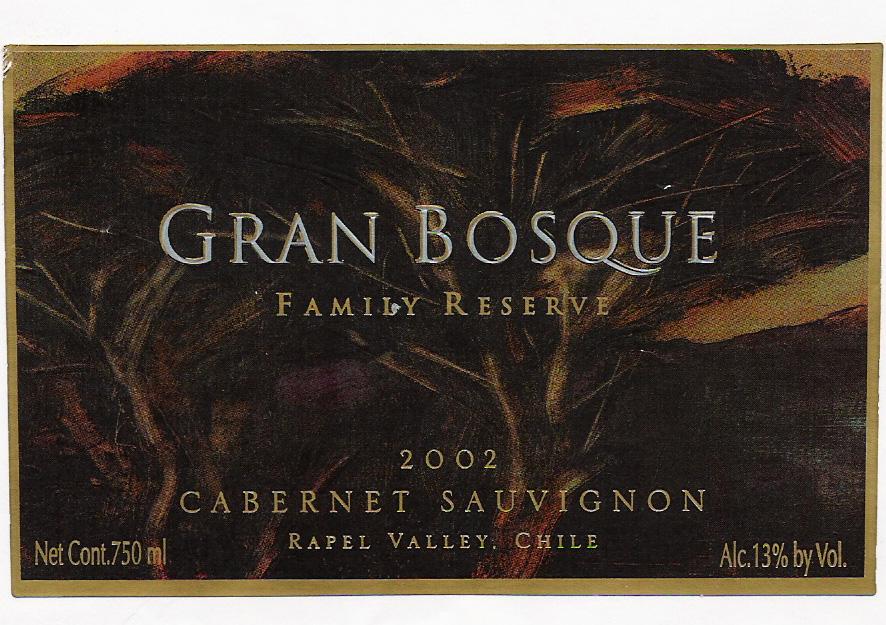2002 Rapel Valley Cabernet Sauvignon
The Gran Bosque Family Reserve Cabernet Sauvignon from the 2002 vintage hails from the esteemed Rapel Valley, a region celebrated for its exceptional red wines. This captivating wine showcases a deep ruby-red color that invites the senses. On the palate, it offers a full-bodied experience complemented by a high acidity that adds brightness and vibrancy to its profile. The fruit intensity is remarkably prominent, with rich notes of dark berries, plum, and hints of toasted oak, creating a luxurious mouthfeel. The tannins are structured and firm, providing excellent ageability and depth, making this wine an outstanding choice for those seeking a delightful, mature Cabernet Sauvignon experience. As a dry wine, it pairs beautifully with hearty dishes, enhancing its versatility and appeal at the dining table.
The Gran Bosque Family Reserve Cabernet Sauvignon from the 2002 vintage hails from the esteemed Rapel Valley, a region celebrated for its exceptional red wines. This captivating wine showcases a deep ruby-red color that invites the senses. On the palate, it offers a full-bodied experience complemented by a high acidity that adds brightness and vibrancy to its profile. The fruit intensity is remarkably prominent, with rich notes of dark berries, plum, and hints of toasted oak, creating a luxurious mouthfeel. The tannins are structured and firm, providing excellent ageability and depth, making this wine an outstanding choice for those seeking a delightful, mature Cabernet Sauvignon experience. As a dry wine, it pairs beautifully with hearty dishes, enhancing its versatility and appeal at the dining table.




